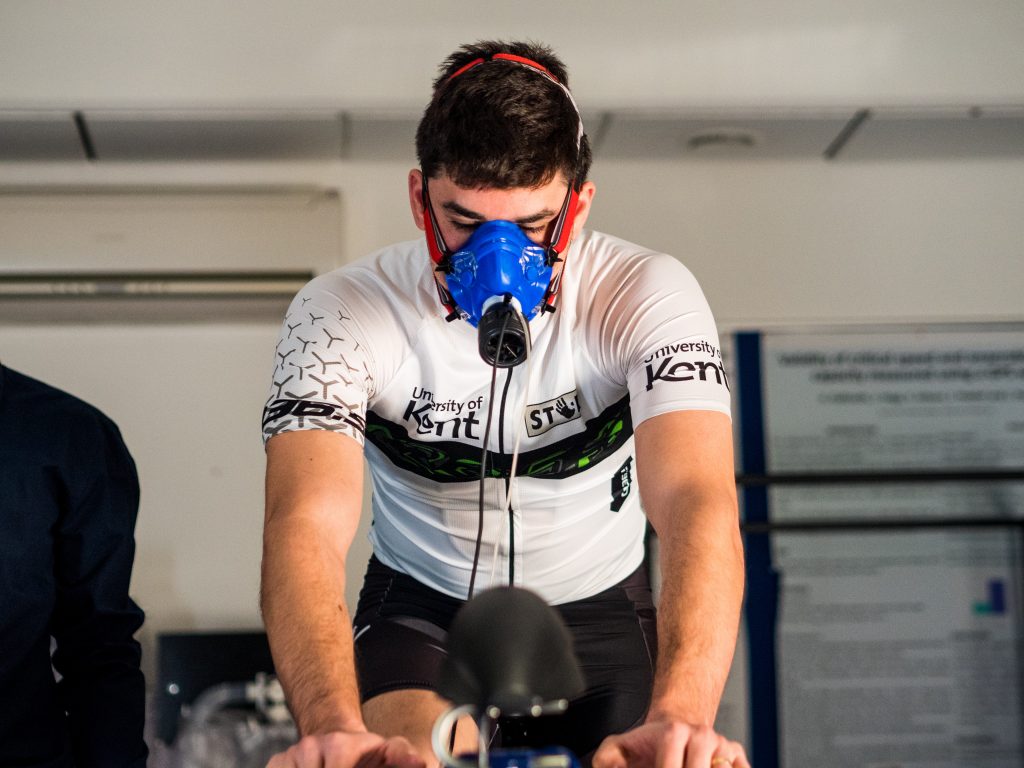Following several recent highly publicised cases of athletes experiencing breathing difficulties, Professor John Dickinson, Head of the Exercise Respiratory Clinic within Kent’s School of Sports and Exercise Science, considers how we all can learn to improve our breathing. He said:
‘Breathing is vital for life, but now no one teaches us how to do it properly. There are various ways of generating breath to ventilate the lungs and a good breathing pattern is essential to optimise health and wellbeing. Unfortunately people can develop less efficient breathing patterns that can have an impact on their health and wellbeing.’
Why do people adopt a poor breathing pattern?
‘Generally we are not taught to breath – we just do it. Unfortunately people can develop a pattern leading to an inappropriate movement of the rib cage and therefore inability to get a satisfying breath. People may adopt a poor breathing pattern for multiple reasons. These include having to compensate for poor posture, which leads to people utilising their breathing muscles (diaphragm and intercostal muscles) to support themselves, which means they cannot expand their rib cage appropriately.
‘Additionally, over-using accessory breathing muscles (shoulder and back muscles), which are easier to activate and allow an individual to inhale air faster, also usually leads to inappropriate movement of the rib cage. Although the air initially goes into the airways at a higher rate, the individual is unable to get a satisfying breath. They then start this cycle of short fast breaths.
‘Breathing through the mouth at rest rather than the nose is usually adopted by individuals with restricted airflow through the nose. Breathing through the mouth will allow air to flow faster through the upper airway and can result in an individual finding it difficult to control the speed.
‘Lastly, anxiety and stress can also be big factors for people adopting inappropriate breathing patterns.’
What does a good breathing pattern look like?
‘At rest, a good breathing pattern will consist of breathing between 8 and 14 times per minute. Where possible the air you breathe in and out should go via the nose so that is filtered and warmed before it reaches the lungs. Movement of the rib cage should involve sideways, forwards and slight upward movement. This movement should be smooth and should be initiated by moving the lower rib cage.
‘A good check to see if you are doing this at rest is to put your one hand on the top of your stomach (just below the sternum) and the other on the top of your chest. You should see the hand on your stomach moving up and down with the hand at the top of your chest relatively still.
‘As people engage in physical activity the volume and frequency of breath increases but should be initiated in the same way. However, breathing may switch to mouth breathing, which is fine, and you will see more movement in the lower and upper chest.’
How does your research improve our understanding of breathing patterns?
‘The University has a dedicated Respiratory Clinic that supports people who experience breathlessness on exertion and those with breathing problems like asthma, dysfunctional breathing patterns and laryngeal (throat) obstruction.
‘Using state of the art technology to map every movement of the rib cage we have identified what a healthy breathing pattern is. We have also developed a system that can provide real-time feedback to help individuals improve their breathing pattern.
‘This research is informing our understanding of breathing pattern and how we can help people over respiratory symptoms and better manage respiratory disease.’
Professor John Dickinson, Head of the Exercise Respiratory Clinic,
School of Sports and Exercise Sciences

